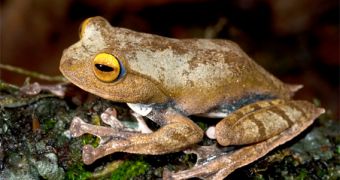Biologists are always excited whenever they identify a new species of plants or animals. However, a recent article reveals that humans often take advantage of this series of unique discoveries with a high conservation value to experience financial advantages.
For years, a powerful illegal animals trade has put all rare creatures at risk, including the newly-discovered 27 species identified by biologist Bryan Stuart, Mongabay informs.
Stuart has first realized the great potential of this threat after monitoring the evolution of the rare Paramesotriton laoensis, a salamander from Laos. After he discovered the creature, he wanted to make the story public and decided to publish his findings in a scientific paper.
Soon after his achievement, he noticed that smugglers were using his accurate descriptions to elaborate their own "treasure maps," to find the unique creature, considered a mere gold mine, in its natural habitat and then sell it on the black market.
This is not the only rare creature exposed to such threats coming from wildlife traffickers. The same fate was shared by a one-of-a-kind turtle from a small Indonesian island, which was brought on the verge of extinction by an intense unlawful trade.
This also appears to be the case of a new species of gecko found in China, sold for up to $2,000 (€1,527) on profitable black markets, especially in Europe and Japan.
Perhaps the most alarming fact is that local people are the ones who actually threaten biodiversity. Apparently, they are paid by 'animal collectors' to find rare creatures in their natural habitat. For their contribution they receive only a few cents, but the traffickers get more than €200 ($261) for each salamander from Laos, for example.
Even though the country has improved its conservation measures by listing some of its rare creatures as Nationally Protected Species in Laos, and making their commercial trade illegal, the black market is still flourishing.
The main strategy to curb the number of unique wildlife species sold on the market draws up a solid collaboration between taxonomists and governmental agencies, to ensure their protection.

 14 DAY TRIAL //
14 DAY TRIAL //